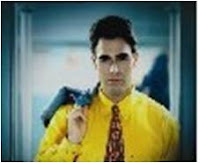
Tuesday, August 10, 2010
Brand Update : SRK Joins Pepsodent in Dishoom Dishoom

Thursday, August 05, 2010
Marketing Strategy : How to Craft Your Brand's Vision
How to Craft Your Brand's Vision
Originally Published here in Adclubbombay.com
Creating a vision for the brand is the most important primary step in the brand management process. Brand Vision can be defined as the long term strategic position that the brand will take in the market as well as in the consumer mind-space. Brand vision offers a strategic intent which will act as a long term goal for the brand.
Creating brand vision is a strategic process which requires the involvement of top management. The vision dictates the future course of action for the brand with regard to its growth and future course of action.
Most of the time marketers are faced with critical decisions regarding the future growth path for the brand. There is a dilemma whether the brand should be extended to cater to new opportunities in the market or to be focused on the current category. Some times marketers tend to extend the brand too much that the entire brand equity gets diluted. Without the guidance of a clear vision, brands tend to lose focus and extend into unchartered unrelated categories. Lack of vision also creates the problem of discontinuity for the brand’s strategies. There are chances that the brand compromises its equity for the sake of short-term growth unless guided by a long-term vision.
Having a brand vision will help marketers make decisions regarding the growth of the brand. The vision also helps marketers to tap into opportunities which are in line with the vision and reject others that contradict the vision. Vision helps the brand to create a brand charter which will act as a rule book for the managers. It will also help the managers to shape the brand strategies during the time of crisis.
Brand vision also helps to develop consistency with regard to brand communication. The messages derived from the brand vision will be consistent across all media. Even when the advertising & creative agencies change, the brand message will remain constant. In the absence of brand vision, the communication messages will not be connected by a common thread.
Brand vision also motivates the employees to perform better. Employees feel motivated and inspired when they are aware of the brand vision. More importantly, employees should feel that they are contributing to the realization of that vision.
Typically brand vision statements should be simple and easy to remember. The golden rule is that every employee should be able to remember the brand vision especially in the case of a corporate brand or service brand.
While drafting the brand vision, the marketers has to keep the following facts into mind
Think Big
While drafting a brand vision, marketers need to have big plans for the brand. The vision should not restrict to the category or even the industry. Instead the brand vision should aim at addressing some critical issues faced by the consumer. The vision should inspire both the consumers and employees alike.
Encourage growth
Brand vision should encourage the growth of the brand beyond product categories. The marketers should be looking at a 10 year time horizon while drafting the brand vision. The marketers should be asking the following questions while drafting the vision.
- In 10 years, what will be the position of the brand in the industry/category?
- What is the core need that this brand is going to satisfy?
- Is that need sustainable over a period of time?
- What needs do this brand satisfy in future?
- Will the vision of the brand appeal to the consumers?
- Does the brand vision excite the employees?
- Does the vision encourage growth and pursuit of opportunities?
- Is the vision easy to understand and communicate?
It is important for the brand to maintain synergy with the corporate strategy. That is why the top management should play a key role to in drafting the vision. When the brand’s vision is aligned with corporate vision, a sustained investment and support can be ensured for the brand’s growth.
Brand visions should be created with customer as the focal point. Many a time brands focus too much on the product rather than the customer need. Having a strong focus on customer will help brands to create visions which are practical. Customers will also be able to relate to the brand vision since the vision is created with the customer in mind.
Periodic Revision
Although brand vision is crafted for a long term, it is important for the marketers to revise the vision from time to time. Brands operate in a dynamic environment. There are chances that the brand’s vision may become irrelevant for the consumers in the changed environment. Hence visions need to be revised in line with the changing consumer environment.
Monday, August 02, 2010
Marketing Q&A : Frame of Reference and Points of Parity
Friday, July 30, 2010
Xylys : It Possesses You

Monday, July 26, 2010
Brand Update : Tic Tac moves from Hello to Refreshment

Saturday, July 24, 2010
Brand Update : Ranbir Kapoor is the New Cool Face of John Players

Thursday, July 22, 2010
Mahindra Voyager : RIP ( 1997-2000)

Sunday, July 18, 2010
Brand Update : Cadbury Dairy Milk For Shubh Aarambh

Thursday, July 15, 2010
Allen Solly : My World , My Way



Sunday, July 11, 2010
Brand Update : Flipkart - From Bookstore to Store

- Book margins may be underpressure and does not make business sense to concentrate on books alone because of price/margin/competitive pressure.
- Wanted to emulate the business model of Amazon which successfully moved from books to other categories
- Investor pressure to deliver more returns.
- Other categories offered lucrative opportunities.
- Want to cash in the brand equity.
- Founders want to build scale and exit ?
Wednesday, July 07, 2010
Brand Update : Ujala Techno Bright

Monday, July 05, 2010
Marketing Q&A : Marketing Career Vs Sales Career
Saturday, July 03, 2010
Brand Update : Logan Loves India

Wednesday, June 30, 2010
Oxemberg : Body Music


Saturday, June 26, 2010
Marketing Strategy : How to Market The Intangible
Marketing the Intangible
Originally Published in Adclubbombay.com
Services contribute about 5o% of India’s GDP and have become an important growth engine for our economy. The growth in the service sector has opened up immense opportunities for new products and also newer markets. The huge service economy of India has attracted many players into the market. The market is now flooded with new players and new products.
Marketing of services is a challenging task primarily because services are largely intangible in nature. Because of this intangible nature, consumers find it difficult to visualize the service or evaluate the quality of service before purchase. For established services this problem is less because customers already have formed their opinions because of their past interactions. For a new service firm, getting the customers to try out the service is a very difficult task. This calls for a strong branding effort on the part of the service marketer to lure the customers into their offerings.
Creating a service brand is not the task of the marketer alone. The entire organization is responsible for crafting that brand experience. This is because of the fact that service cannot be separated from the service provider. When the brand promises a consumer of a definite experience, the entire organization should be working as a single unit to provide that expected experience. People who are a part of the organization form an important element of the consumer’s perception about the service brand. For example, the behaviour of the cabin crew in an airline service is a critical factor that defines the perception of the consumers regarding that brand. Hence managing a service brand is more of a strategic function rather than a mere functional task.
For a consumer, evaluating a service before purchase is a difficult task. There is a strong element of risk which is perceived by the consumer before availing the service for the first time. Marketers’ task is to reduce the risk perception and encourage trust so that consumers try out the services. Many companies use branding as a tool to build trust and thus create a long lasting relationship with the customers.
Professor Leonard Berry in his article “Cultivating Service Brand Equity “in Journal of the Academy of Marketing Science” talks about four ways to build service brand equity. According to him, the service brand should be (a) Different (b) Determine your own fame (c) Make an emotional connection and (d) Internalize the brand. Strong service brands create powerful differentiators to convince the customers that they are different from the rest of the crowd. Service brands should also be very clear about their core strengths which will inturn makes customers to come back to their service offering. The brand should then build emotional connection with the consumers. Another important requisite is that the employees of the service organization should internalize the brand values and then only they will be able to provide outstanding customer service.
While communicating the service brand’s message, firms should be able to project its credibility, expertise and trustworthiness to the customers. Brands use characters, logo,symbols,colors etc to reinforce its service promise. ICICI Bank successfully used celebrities to build its image as a trustworthy new generation bank. Global consultancy firm Accenture firm uses Tiger Woods to convey its core brand value of “Performance”. These brands have used brand elements like slogans to reinforce the brand promise. Brands like Bajaj Allianz use characters to convey its message. Bajaj Allianz uses the animated “Super Agent “character to convey the message of reliable customer service. These brand elements help the customers to visualize the services even in the pre-purchase stage thus reducing the perceived risk of service failure.
Marketing a service require a holistic approach where the entire organization is focused at fulfilling the brand promise. It becomes the responsibility of every employee in the service organization to take part in creating the experience promised by the brand.
Tuesday, June 22, 2010
Sure : No Sweat

Saturday, June 19, 2010
Brand Update : Vivel Extending to Fairness Cream

Thursday, June 17, 2010
Marketing Strategy : Customer Service Starts From The Top
Zappos.com is an online retailer of fashion accessories predominantly shoes. The retailer is famous for its focus on customers. The key factor behind the stupendous success of Zappos.com is their customer service culture. The company is passionate about their customers and the culture of putting customer first runs through the entire company. The entire business model of this company is centred on customers and the CEO is the driving force behind this customer oriented culture. The company has a warehouse that is open 24X7 so a customer who orders at 11 PM gets a next day delivery. The company also has a 365 day return policy where a customer, if he is not satisfied, can return the product with in 365 days of purchase and get a refund.
Top Management Involvement
The quality of customer service is directly proportional to the involvement of senior leaders of the company. Although the actual execution of service is done at the lower levels of management strata, unless the senior leaders are held responsible for customer satisfaction, the process will not excel. But for that, customer service should be given its legitimate position in the management functions. In service firms it is natural that customer service is given its due importance. But in other companies there is no reference to customer service as a function.
When senior managers become involved in managing customer service and satisfaction, the function gets recognized in the organization. Priorities change and service does not become an irritant but a priority. Firms like Zappos.com,Ritz Carlton, Mitchells and Marriott thrive because of the intense involvement of top leadership in monitoring customer service. In firms like Zappos and Marriott, the CEOs take personal interest in customer service initiatives.
Employee Motivation
Although it may seem very basic to state that employee motivation is critical to any customer service initiative, many firms fail to practice this obvious dictum. Since the frontline employees are the implementers of customer service, it is absolutely essential that they are given the necessary authority and responsibility to handle any request from the customers. This perhaps will the main reason why consumers do not appreciate being serviced by call centre executives. These outsourced firms usually do not have any authority to solve the issues of customers.
Randy and his sister approached the store and was surprised when the store staff replaced the shakers for free and even apologized for not packing it correctly. The author then mentions that his family later went on to give more than $100,000 worth of business to Disney Land. The salt and pepper shaker was not worth more than $10 but the small gesture by the Disney Staff created goodwill that is worth millions.
Such customer service excellence will not happen unless the employees are intrinsically motivated. The motivation comes from the responsibility and the freedom that comes with the job. It is in this context that organisational culture becomes critical. While processes can make customer service error free, spontaneity can come only from individuals. Organizations should strive to bring that spontaneity into the customer service.
Another story about customer service spontaneity -
Bill Marriott , the Chairman and CEO of Marriott International, in his blog once narrated a story about an Associate who gave his pants to one of the guests . The guest who came for a business meeting found that he accidently packed his wife’s slacks instead of his own. He realized this only minutes before the meeting began. The chances of going to a store to buy one and making it to the meeting on time were minimal. One of the Marriott Associates noticed that he happened to be of the same size as the guest and offered him the pair of pants he was wearing. The pants were of perfect fit and the guest went to the meeting on time. The Associate managed with his extra casual pants till the grateful guest returned.
(source : http://www.blogs.marriott.com/search/default.asp?item=2358646).
It is not that companies today are not aware of these basics but the fact is that in pursuit of high growth, often these fundas take the backseat.
Sunday, June 13, 2010
Brand Update : Sugar Free Natura - Expanding Brand Usage

Tuesday, June 08, 2010
Brand Update : Vanish Gets a Brand Ambassador
